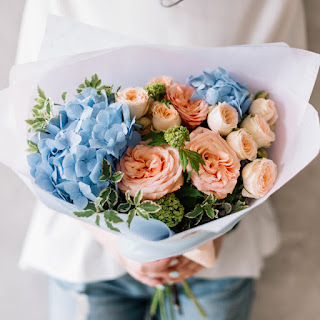Introduction
Hydrangea flowers are a beautiful and popular choice for gardens, thanks to their large, round blooms and vibrant colors. These flowers come in a variety of colors, including pink, blue, purple, white, and red, and can be grown in a variety of climates. In this article, we will explore some tips for creating a hydrangea flower garden as a beginner.
Choosing the Right Location
When choosing a location for your hydrangea flower garden, it's important to consider the amount of sunlight the area receives. Hydrangeas prefer partial shade to full sun, so an area that receives dappled sunlight or partial shade would be ideal. Additionally, hydrangeas prefer well-drained soil, so make sure the area you choose has adequate drainage.
Choosing the Right Variety
There are many varieties of hydrangea flowers to choose from, each with its own unique characteristics. For example, the mophead hydrangea has large, round blooms, while the lacecap hydrangea has a more delicate, lacy appearance. Some varieties are more cold-hardy than others, so it's important to choose a variety that will thrive in your climate. Additionally, some varieties bloom on new wood, while others bloom on old wood, so it's important to choose a variety that will bloom at the right time for your area.
Planting and Care
When planting your hydrangea flowers, make sure to dig a hole that's at least twice as wide and as deep as the root ball. Backfill the hole with a mixture of soil and compost to provide the plants with the nutrients they need to thrive. Water the plants well after planting, and make sure to keep the soil consistently moist but not waterlogged.
To maintain the vibrant colors of your hydrangeas, make sure to fertilize them with a slow-release fertilizer or a fertilizer specifically formulated for hydrangeas. Additionally, prune the hydrangeas after they have finished blooming to encourage new growth and blooms. With the right care, your hydrangea flower garden will thrive and provide you with beautiful blooms for many years to come.
Pest and Disease Control
As with any garden, hydrangea flowers can be susceptible to pests and diseases. Common pests include aphids, spider mites, and scale insects. To control these pests, you can use insecticidal soap or neem oil. As for diseases, hydrangeas are susceptible to powdery mildew, which is a fungal disease that appears as a white, powdery coating on the leaves. To control powdery mildew, make sure to provide your plants with adequate air circulation and avoid watering the leaves.
Conclusion
Creating a hydrangea flower garden is a great way to add beauty and color to your landscape. With the right location, variety, and care, your hydrangea flowers will thrive and provide you with beautiful blooms for many years to come. Additionally, with proper pest and disease control, your hydrangea garden will be able to flourish without any hindrances. Remember to choose a variety that will thrive in your climate and to choose an appropriate location and soil type. With these tips, you'll be well on your way to creating a beautiful hydrangea flower garden.

No comments:
Post a Comment